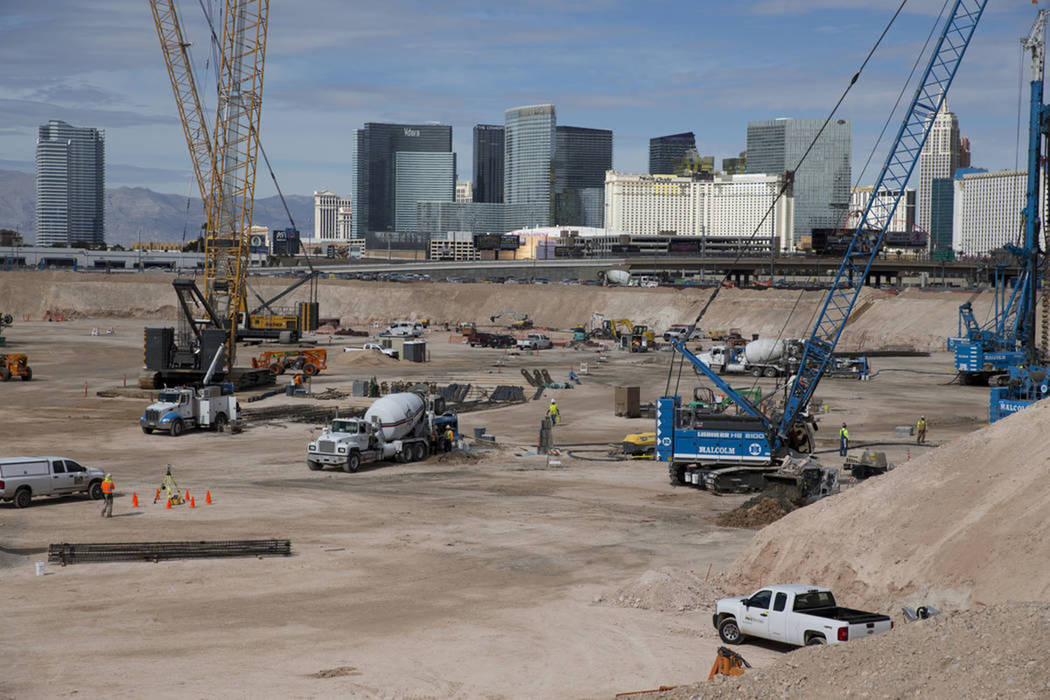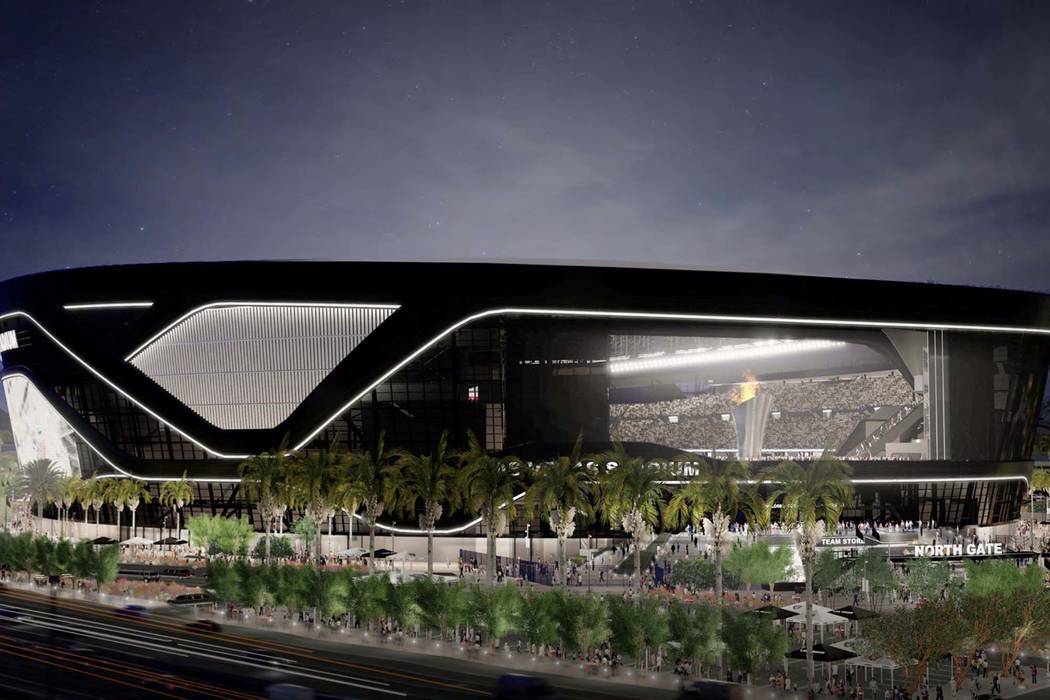Las Vegas Stadium Authority OKs $546.3M budget for 2018-19 fiscal year
Las Vegas Stadium Authority Chairman Steve Hill vowed Wednesday to make upcoming board meetings as boring as possible.
The reason: Meetings that are boring mean everything is running smoothly and as planned.
Hill and company didn’t disappoint Wednesday. In just under two hours, the board unanimously approved a $546.3 million budget for the 2018-19 fiscal year and a collection of amended agreements designed to better account for funding of the $1.8 billion, 65,000-seat indoor stadium under construction at Interstate 15 and Russell Road.
Of the total budget, only about $2 million is devoted to authority operations. The rest would be used to pay debt service, handle potential tax revenue declines, fund future capital projects and offset lost revenue to UNLV from Sam Boyd Stadium.
Anything left after that would go to a fund to pay down debt ahead of schedule.
4 percent ahead
As of March, a 0.88 percentage-point increase in Clark County’s hotel room tax has generated $53.2 million in revenue in the 13 months it has been in place. That’s about $2.1 million or 4 percent ahead of projections.
But for the current fiscal year, which started July 1, the tax has generated $36.1 million in revenue, about $321,118 or 0.9 percent less than projected.
March revenue came in 2.5 percent below expectations. It was the second straight month and the fifth in six months that revenue fell below estimates. But authority officials noted that some municipalities have not turned in revenue yet, so the monthly figures could increase.
Hill said he isn’t worried about the recent numbers because of all the backstops built into the funding plan. He said it’s much like watching the stock market — there will be occasional volatile months, but the objective is to see an overall increase in value.
“When you follow it on a month-to-month basis, you’re going to get some variability in that,” Hill said. “When you look at what that looks like after we draw a line for 30 years, you’re not going to be able to tell the variability was there.”
Hill said the biggest question for now is how much residual money would be left once all the funding commitments are met.
Personal seat license amendments
Board members also unanimously approved amendments to the authority’s personal seat license agreement with the Raiders and a modification to the stadium construction budget clarifying that an additional $40 million is being dedicated to the team’s premium seating and marketing plan. The cost of the stadium won’t change — just the accounting.
So far the Raiders have spent $172.4 million, 19 percent of the team’s commitment, on the stadium project. Another $43.6 million, or 22 percent of the total commitment, has been paid by the NFL’s G-4 loan program, and $30.6 million, or 4 percent, of the public’s $750 million contribution has been spent to date.
The $1.8 billion cost of the stadium does not include required off-site parking, a parking shuttle system or the NFL relocation fee the team must pay for leaving Oakland.
Contact Richard N. Velotta at rvelotta@reviewjournal.com or 702-477-3893. Follow @RickVelotta on Twitter.
Stadium update
The $1.8 billion Las Vegas stadium project is on schedule and on budget, an executive with the Raiders' stadium construction subsidiary told the Las Vegas Stadium Authority on Wednesday.
Some details:
-More than 1 million cubic yards of dirt — more than 35,000 double truck loads — has been excavated with no costly underground surprises.
-The mass excavation was completed under budget so savings will be devoted to a contingency fund.
-A relocated floodwater box culvert is nearly completed.
-More than 11 percent of the project's concrete has been poured.
-More than 20 cranes, some capable of lifting more than 1,000 tons and reaching more than 600 feet high, will soon be on the site.
-On a typical work day, 450 construction workers are on site. That will increase to 1,500 workers at the peak.
-An estimated $40 million was spent on the stadium in April. When the level of construction hits its peak, $90 million a month will be spent.
-Contractors are 20 percent ahead of their small-business-enterprise goal of 18 percent of contracts going to 32 minority- and women-owned businesses with $90 million in contracts awarded.
-The workplace diversity goal of 38 percent of hours worked by minorities and women has been surpassed with more than half the hours going to that group, which includes 3 percent going to veterans.
-As of Wednesday, there are 801 days before substantial completion.
























